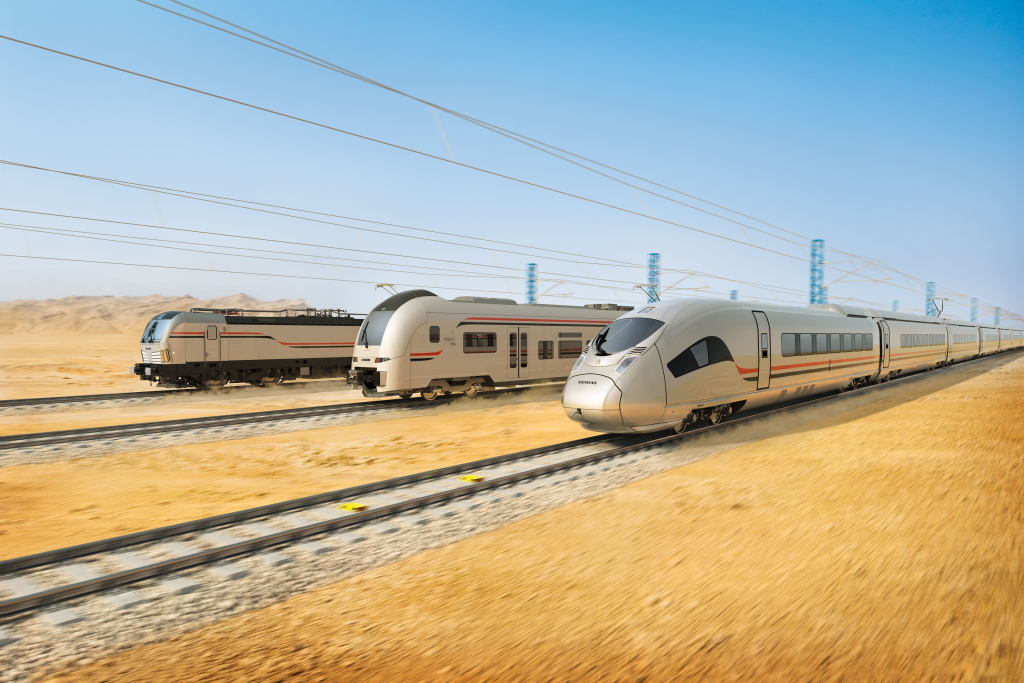 Orascom and Arab Contractors awarded NGE, with its rail expertise subsidiary TSO, a contract for the construction of a high-speed railway in Egypt.
Orascom and Arab Contractors awarded NGE, with its rail expertise subsidiary TSO, a contract for the construction of a high-speed railway in Egypt.
NGE will provide its expertise, human and material resources to local companies Orascom and Arab Contractors.
The construction works will start “in early 2023” covering a 330 km double track line and more than 100 turnouts. NGE says that the project would require “the mobilisation of up to 500 people on the site”. We are proud to make a significant contribution to this project, which will provide nearly 90% of the Egyptian population with access to fast and reliable public transport. It will also make a significant contribution to sustainability by shifting freight traffic to rail and stimulating Egypt’s economic development. This new success is in line with our strategy to double our international business by 2025,” Orso Vesperini, COO International and Major Projects at NGE said.
The railway line will link the cities of Ain Al Sokhna, on the western shore of Gulf of Suez and Borg El Arab, 50 km south-west of Alexandria, crossing the October 6 City, situated in Cairo metropolitan area.
The high-speed railway in Egypt is part of a Memorandum of Understanding signed in January 2021 by the National Authority for Tunnels (NAT) and the consortium of Siemens Mobility, Orascom Construction and The Arab Contractors for the construction of a 1,000 km rail network with the first 460 km line linking El-Alamein and Ain Sokhna via Borg El-Arab, Alexandria and New Administrative Capital. The line will be also designed to accommodate freight services.
In September 2021 NAT and the consortium signed a USD 4.5 billion contract for the construction of 1,800 km km high-speed rail system called “Suez Canal on tracks” with an initial line of 600 km connecting Ain Sokhna and Marsa Matrouh port cities towards Alexandria. Another 1,200 km line will connect the Greater Cairo region from 6th October City along the Nile River with Aswan and a 225 km line will provide transport link between Luxor and Safaga via Hurghada.
A final contract to create the Egyptian high-speed rail network was signed in May 2022 with the same consortium to build 2,000 km of rail network created by the three above mentioned rail connections. The new railway system will provide transport connections to 60 cities across the country which results that 90% of the population will gain access to an integrated rail network.
The state-of-the-art high-speed rail network will connect 60 cities throughout the country, with trains that can operate at up to 230 km/h. By constructing the new high-speed lines, 90 percent of Egyptians will have access to this modern, safe, and integrated rail system and will enable around 500 million journeys a year.
All electric lines will be equipped with ETCS Level 2 signalling system. The contract also includes the supply 41 Vectron locomotives, 41 eight-car Velaro high-speed trains and 94 four-car Desiro regional trains.
In November 2022, NAT and a consortium of DB and Elsewedy Electric, Egypt, signed a EUR 1 billion contract to operate country’s high-speed rail system for 15 years and includes an option for a 15-year extension.
The new railway network is expected to reach 500 million journeys annually reducing the CO2 emissions by 70%.
In 2021, the Transport Ministry announced a USD 14 billion investment to support the modernisation and expansion of the railway network which would provide better and more connected services. According to the strategy, in the next years the railway network will be expanded to 10,000 km from currently 6,700 km and until 2030 the authorities intend to build additional 1,500 km of new lines across the country and to modernise the existing connections.
More than 60% of the existing network is concentrated along the Nile Delta and Nile River Valley connecting Alexandria and Cairo with cities from north and south regions of the country. The remaining network provides links between the eastern and western regions which are mainly used for freight transport.
Share on:



